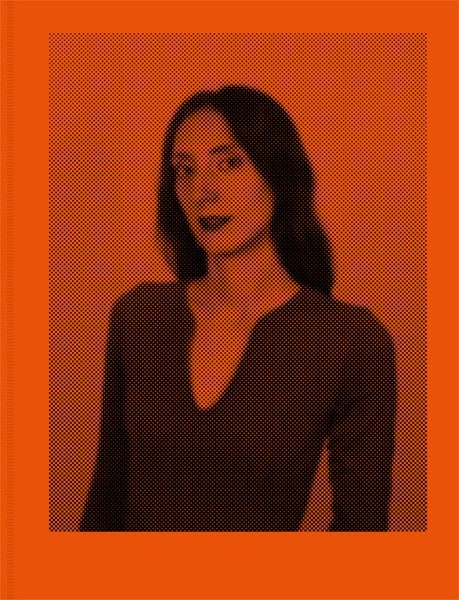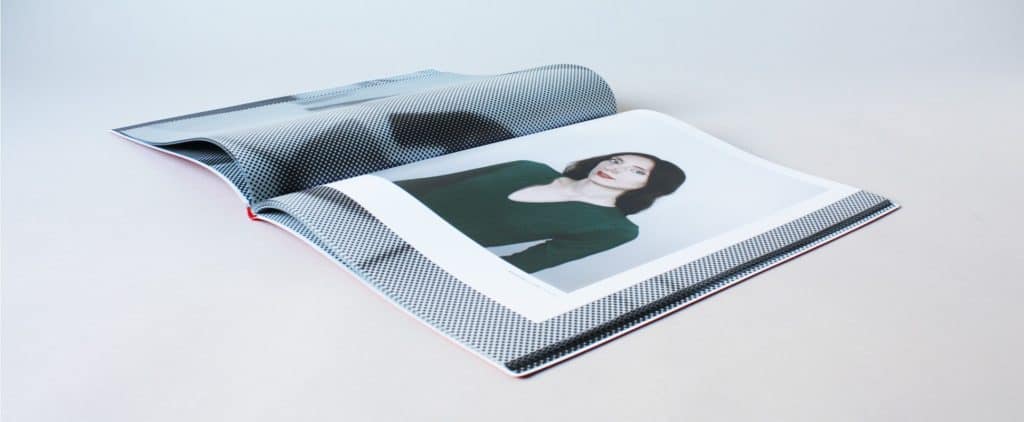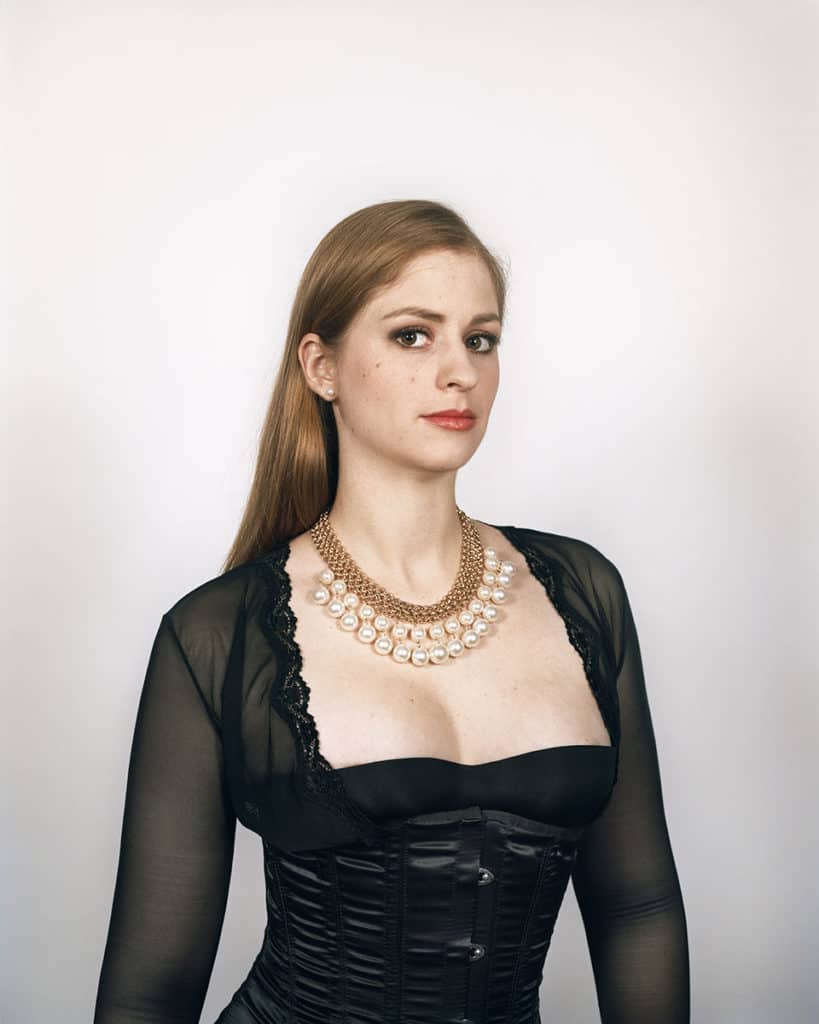A young German photographer Max Eicke has sent me his book “Dominas” for a review long enough ago: this large-format book in rubber red cover (a real eye-catcher, according to Joerg Colberg) has been published by Kehrer Verlag way back in 2016.

We know each other with Max for a long time: several years ago I wrote for Goethe Institute a review of the most exciting works by young German authors, and his project had presence justly there.
Max had studied photography in Munich. After graduation, he moved to London for life and work. While working on his diploma project dedicated to women performing the dominating role in sex Eicke has traveled all over Germany to find models. From 170 women whom he tried to get involved in the project, 146 refused to. Portraits of the rest and extracts from anonymous interviews with them were published in the book. Max came to his models being equipped with a large-format camera and a book of Holland photographer Rineke Dijkstra whose visual style in portrait photography – a cold, strict, but at the same time, fragile – was an inspiration for him. In the book, aesthetic staged photos taken by himself in a studio thus colliding a standard representation of these women with results of his investigation and offering the spectator an opportunity to make his own conclusion.
The red rubber (latex) cover of the book is perfect for Eicke’s intention: the book “clothes” visually rhymes with latex outfit of the “dominas” themselves. On the red background, there is a printed in black typographical raster portrait of a girl in somewhat neutral dark clothes which tells almost nothing about its possessor. There is no title at all – we see it only on the turnover. The dots of typographical raster send us to it shall preferably be about criticism of representation.

The edition has a rather large size even for a photo book: 26 to 34 cm. But the color illustrations themselves are more modest in their scale – they play a role of inserts of a smaller size alternating with big black and white sheets. There we see some fragments from the BDSM scenes (which are printed in the same typographical raster and resemble movie stills) and with red paper A4 format sheets where the author gives the word to the real heroines through extracts from their interviews classified under specific themes: power, desire, prejudices, perversion, etc.
The book is “built” very clearly: alternating different-scale images give the rhythm and work for the author’s idea to match “common representation” about dominas (which are in raster fragments) and real women of flesh and blood who had tried on themselves a role of a sexual “mistress.” The Eicke’s portraits are somewhat heterogeneous. Some of them are so flattering that there is indeed some magic around reminding of this favorite Rineke Dijkstra (e.g., a picture of a young lady under the name of Bizarrlady Emy) who looks like a vulnerable and a little bit sad fairy princess dressed out in a theatrical corset, pearls, and lace.

Others just mainly look at the large-scale Eicke’s camera straightly, with dignity and rather aristocratically demonstrating some excellence (what is possible due to their occupation), sometimes resembling of heroines of fantastical films about future in cosmic and erotically-kitsch outfits a la Barbarella.
Typographical raster used by the author in his book refers to the idea of media representation which often presents us an image far from reality, a certain “mask”, a stereotype. But does Eicke himself come closer to that reality? Did he succeed in unveiling his futuristic queens? Rather no; we see only a faithfulness of the mask. The heroines are posing with dignity and present their professional image, but their insides are more often closed. Maybe portraits made in home scenery rather than a studio one would help better. Turning to Rineke Dijkstra, there is no way to forget that she often shoots her heroes in “after” condition, after climax. That allows her to draw the psychological state of them so delicately and sincerely – when they are unable to play themselves in the front of the camera (e.g., a torero shot right after a fight with a bull). But maybe Eicke didn’t make a point of it and just gave a possibility to his heroines (who he profoundly respects) to demonstrate themselves with dignity and with not a shadow of objectivization and to tell about their experience through anonymous texts-reflections in the book.

Anyway, the Eicke’s photo project is far from a documentary essay about life of female sex-workers (like, for example, the project ‘Kurfürstenstraße’ of his colleague from Berlin Kathrin Tschirner). The author is quite more interested in the power phenomena investigation and the search of personal in collective. Besides, it is a beautiful and perfectly structured book with proper portraits which is nice to be held in hands and to be put on a shelf at home.
Forcing the spectator to touch his creation, Eicke imperceptibly puts us into his game: the one taking up this book and tactically enjoying the book medium… automatically becomes a latex fetishist. But all of us, photo book lovers, are at some point fetishists by default.
Jana Romanova:“Waiting”. Photo book review
December 7, 2016
Young Russian photography. Part 2. Ural.
April 19, 2015
Young Russian photography. Part I
January 11, 2015


